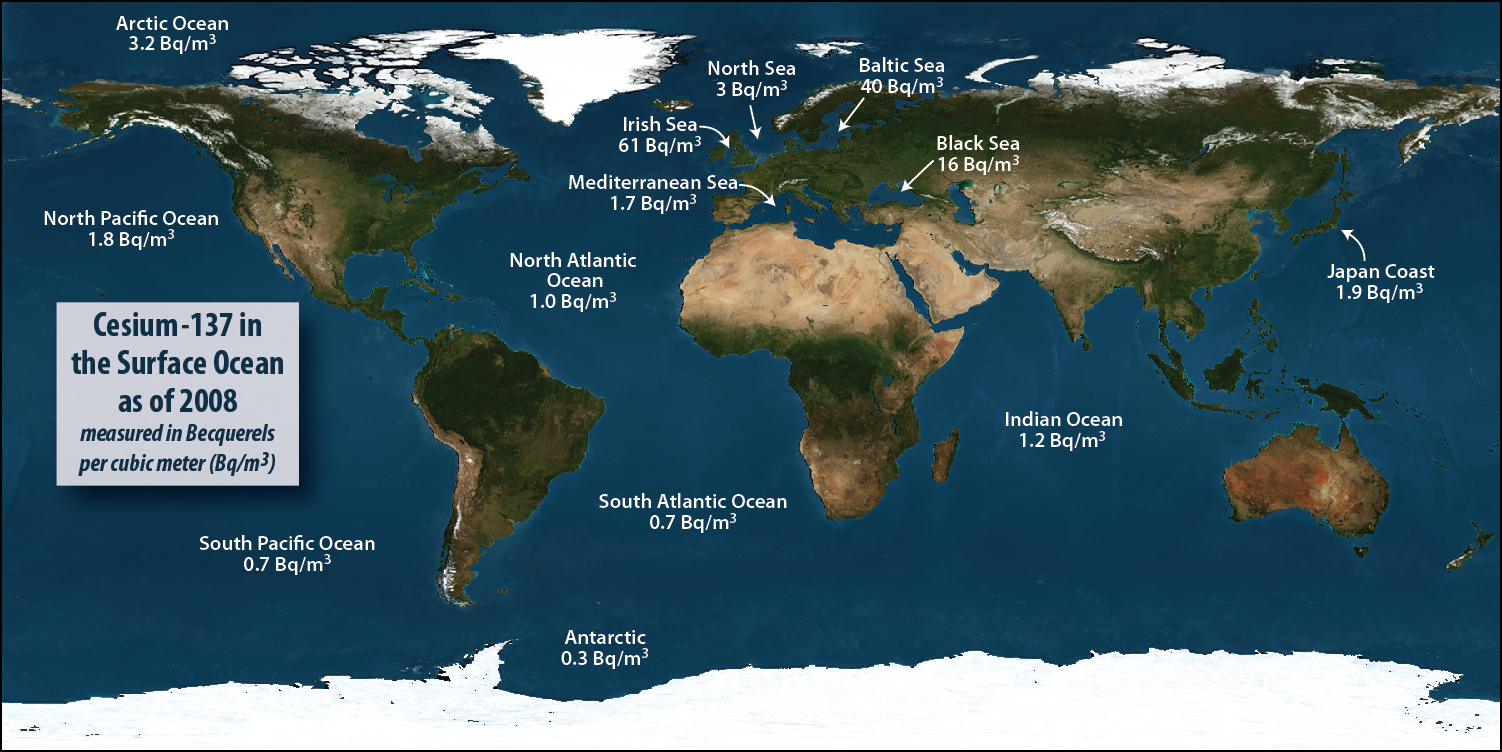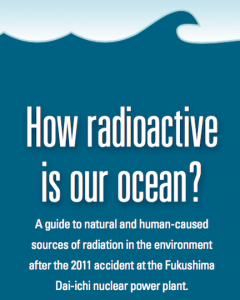Nuclear Power Plants and the Ocean
All nuclear power plants (NPPs) release small amounts of radionuclides, notably cesium (Cs-137 & Cs-134), tritium (H3), and iodine (I-131) as well as cobalt and iron (Co-58, Co-60 & Fe-55) into the environment over their lifetime. These amounts are typically small and spread out, and scientific studies generally indicate that these releases are not related to negative health effects in people or the environment. However, larger volume purposeful releases into the environment from NPPs that have been destroyed, damaged, are being decommissioned or have uncharacterized stored wastewater following an incident are a source of radionuclides that could be an environmental and health concern.
Information and studies such as those presented on this website serve to inform the public and policymakers to address both the potential real risk and misunderstandings of nuclear power plant waste.
Café Thorium Historical Involvement
Café Thorium has been involved with nuclear power plant waste issues for more than 30 years, starting with the fallout from Chernobyl Nuclear Power Plant into the Black sea (1987), continuing with groundwater studies at Department of Energy sites (Savanah River, GA and Hanford, WA), and more recently investigating the consequences of the 2011 disaster at the Fukushima Dai’ichi Nuclear Power Plant (FDNPP, Japan). As part of this interest, we have also weighed in on issues related to the store liquid wastes at FDNPP as well as at the San Onofre Nuclear Generating Station (SONGS, California) and Pilgrim Nuclear Power Plant (PNPP, Massachusetts). Find out more about these three sites by visiting the page links below. More information about nuclear power and understanding radioactivity is below.
Radioactivity in the Ocean
The background level of radiation in oceans and seas varies around the globe. Cesium-137 is an easily measured radionuclide the can illustrate this variation around the world. Measured in atomic disintegrations per second (Becquerels) of cesium-137 in a cubic meter of water we can see levels from 0.3 Bq/m3 up to 61 Bq/m3 in the image below.
The primary source of cesium-137 has been nuclear weapons testing in the Pacific Ocean, but some regions have experienced additional inputs. The Irish Sea in 2008 showed elevated levels compared to large ocean basins as a result of radioactive releases from the Sellafield reprocessing facility at Seacastle, U.K. Levels in the Baltic and Black Seas are elevated due to fallout from the 1986 explosion and fire at the Chernobyl nuclear reactor. By comparison, EPA drinking water standard for cesium-137 is 7,400 Bq/m3. (Data courtesy of MARiS/IAEA and CMER; Illustration by Jack Cook, courtesy Coastal Ocean Institute, WHOI).

 Download our Guide to radioactivity in the ocean.
Download our Guide to radioactivity in the ocean.